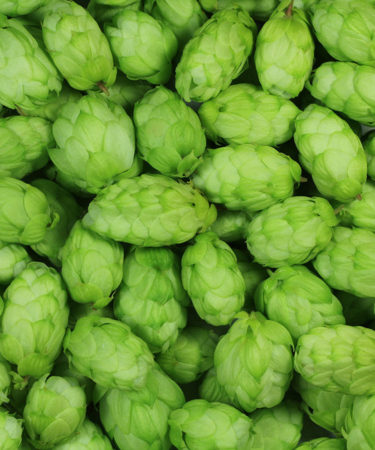There are no two more prominent styles of beers that beer geeks and brewers – both home and professional – obsess over more than Pale Ale and India Pale Ale – better known as IPA – but what’s the actual difference between these two hoppy beers, and how did both become so popular in the craft community? The answer to both questions lies in some truth, with a bit of legend and myth thrown in, as well as a lot of good old fashioned American pride.
The first time the term Pale Ale was used in regards to describing a style of beer goes way back to 1703 when a batch of beers that were being made in England utilized malt that happened to be roasted with coke. (The coke we’re referring to here is a fuel derived from coal that has very little impurities and a very high carbon content, so it doesn’t create much smoke, creating a dry heat rather than a smoky heat.) The resulting roasted malt was lighter because of the lack of smoke and it wound up creating beers that were lighter in color than others on the market at the time, resulting in the name Pale Ale, since the ale in the glass was visibly lighter when placed next to the other beers at the bar. In addition to the lighter color, because the resulting malt had a milder flavor, the hops were able to shine through more prominently, thus Pale Ales came to be associated not only with their pale color, but their mild hop flavor as well.
Pale Ales became quite popular in Britain, where customers would often also refer to them as Bitters, due to the hop profile, and they remained the only hoppy beers on the market for a little over 100 years. That is until 1829, when we have the first record of the name IPA being used as a descriptor for a hoppy beer specifically prepared for India that appeared in an ad in the Sydney Gazette And New South Wales Advertiser. This is where much of the legend and myth surrounding the birth of the IPA really takes place.
As legend has it, prior to that ad appearing in the newspaper for this new style of beer, Brits who had ventured to their new Indian colony were becoming homesick for the beers from back home and so they began to request that their favorite Pale Ales be shipped halfway across the world to India. Fearing the beers would not make the journey and would ultimately arrive sour and flat, it’s said brewers fortified them with a much stronger backbone of hops and alcohol, protecting them on their six-month journey across the sea. When they arrived, the beers not only survived the journey, but many preferred their hoppier flavor. And thus, the IPA was born.
The reason this tale may only be a legend is because at the same time period, stouts and porters were also shipped to both India and America from England, and neither of these styles had their hops increased, yet both survived the journey just fine. This has caused some people to call into question whether this tale is simply a nice way to easily explain how beers called IPAs wound up with stronger hop characteristics than their Pale Ale siblings.
However IPAs came to be, they really took off during America’s current craft beer boom. Starting around 1980, Sierra Nevada began experimenting with the classic Pale Ale style using American hops, which were brighter, fruitier and more resinous than their English counterparts. They released their Sierra Nevada Pale Ale in 1981 and the style took off. The result was an American Pale Ale that was hoppy and distinctly American, due to its inclusion of the American hops – Cascade being the most prevalent. When brewers naturally sought to make a beer even more hoppier than the Pale Ale, of course they referred to it as an IPA.
So all an IPA technically is, is a more assertively hopped and stronger version of a Pale Ale, yet what that actually means differs depending on the brewer making both beverages. While a Pale Ale is the milder version of a brewer’s IPA, the lines definitely blur and you can have a Pale Ale by one brewer than seems just as hoppy as the IPA of another; it all depends on what that brewer’s definition of the two terms, since there are no formal rules.
To make things a bit more confusing, American styles of IPAs also traditionally differ depending on which coast of the United States your beer happened to have been brewed on. West Coast IPAs, which are typically the IPAs most people seem to prefer, are known for their much more intense hop characteristics – paying homage to the plethora of fresh hops available to brewers in the Pacific Northwest. IPAs made on the East Coast, on the other hand, traditionally use a stronger malt presence to bring more balance to the hop intensity.
Header Image via Shutterstock.com
